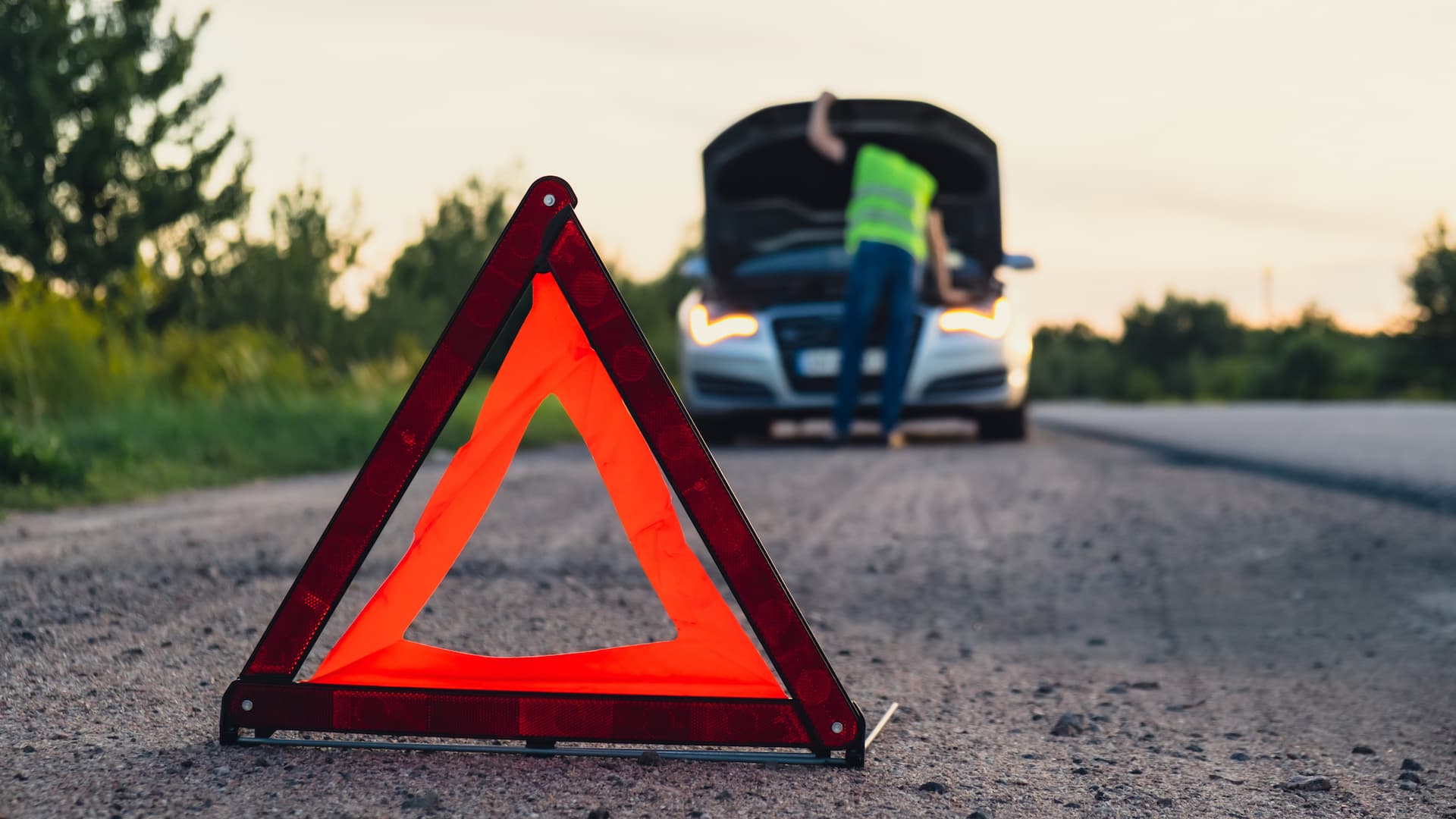You’re cruising along, vibing to your favorite song, when — bam!
Your car decides it’s had enough.
Dead battery, flat tire, engine troubles — car breakdowns are notoriously famous for bad timing, but you don’t need to freak out yet.
With a few hacks up your sleeve and some roadside know-how, you can handle the chaos like a pro.
In this guide, we’re breaking down (pun intended) exactly what to do immediately when your car calls it quits and how to tackle the most common breakdowns safely.
Let’s begin!
What to Do Immediately When Your Car Breaks Down
When your car suddenly taps out, your priority should be safety.
Here’s what you should be doing next:
- Stay calm and turn on hazard lights.
- Pull over safely to the shoulder or nearest exit.
- Use the emergency brake if needed and turn the wheels away from traffic.
- Stay inside your vehicle if you’re on a busy road.
- Call roadside assistance or a mobile mechanic service.
- Place reflective triangles or cones if you have them.
- Keep the location services active on your phone so the roadside assistance can find you.
Once you’re safely off the road, it’s time to figure out what went wrong.
Let’s check out the most common car breakdowns drivers experience and how to deal with each one without losing your cool.
5 Common Car Breakdowns and How to Handle Them
Most breakdowns have simple fixes if you know what to look for. Here’s how to tackle the usual troublemakers on the road:
1. Dead Battery
If you turn the key and all you hear is a click or no response, it’s a classic sign of a dead battery. This is one of the most common reasons cars refuse to start unexpectedly.
Solution: Try to jumpstart using cables and another vehicle or a portable jumpstarter.
2. Flat Tire
A sudden thudding noise or a wobbly steering wheel usually means you’ve got a flat tire.
Solution: If you’ve got a spare tire and jack, you can replace the flat tire following your car manual’s instructions. You can also get a Fix-a-Flat can to temporarily seal the puncture and drive to a repair shop. If you’re unsure, call roadside assistance for help.
3. Engine Overheating
When you see steam billowing from under the hood or notice the temperature gauge climbing into the red zone, your engine is overheating. This is a severe car issue that needs immediate attention.
Solution: Pull over safely and turn off the engine right away. Let the car cool down before you open the hood, and never open the radiator cap while it’s hot to avoid burns. You can try adding coolant once the car has cooled, but calling a mechanic is usually the safest bet.
4. Brake Failure
If your brake pedal goes entirely to the floor, feels spongy, or you hear a grinding or squealing noise when you press it, you could be experiencing brake failure. This poses a serious safety risk and needs immediate action.
Solution:
Stay calm, and try pumping the brakes repeatedly to build pressure. If that doesn’t work, gradually apply the emergency brake. You can also use engine braking by shifting to a lower gear to slow the vehicle down. Pull over safely and call for emergency roadside assistance — do not attempt to drive further until you fix the issue.
5. Car Won’t Start
If you turn your car key or push the ignition button but nothing happens, it can signal a dead battery, a faulty ignition switch, or problems in the fuel system.
Solution:
First, check if the dashboard lights or interior lights turn on. If they don’t, your battery may be the culprit. Next, inspect the battery terminals for corrosion or loose connections. If everything looks fine and the car still won’t start, it’s best to call a mobile mechanic to diagnose and fix the issue on-site.
Emergency Kit Essentials for Roadside Breakdowns
No matter how much you invest in regular car care, unexpected breakdowns can still happen. And when they do, having a well-stocked emergency kit can make all the difference.
Here’s what your kit should include:
- Must-have: Jumper cables, flashlight, reflective triangles, basic tools, tire inflator (or Fix-a-Flat can), coolant, first aid kit, and a phone charger
- Nice-to-have: Blanket, water, snacks, and gloves for cold weather
PRO TIP: Update your kit seasonally. Stock up on extra water during summer and keep an ice scraper handy for winter.
